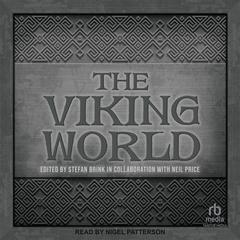 Play Audiobook Sample
Play Audiobook Sample
Thraldom: A History of Slavery in the Viking Age Audiobook
 Play Audiobook Sample
Play Audiobook Sample
Publisher Description
Nordic slavery is an elusive phenomenon, with few similarities to the systematic exploitation of slaves in households, mines, and amphitheaters in the ancient Mediterranean or the widespread slavery at American plantations during the eighteenth and nineteenth centuries. Scandinavians in the early Middle Ages lived in a society foreign to us, characterized by different and shifting social statuses. A person could be at once socially respected and unfree. It was possible to hand oneself over as a slave to someone else in exchange for protection and food. One could be sentenced temporarily to enslavement for some offense but later purchase his manumission. Young men could enter into a kind of “contract" with a king or chieftain to join his retinue, accepting his authority, patronage, and jurisdiction, while at the same time making a quick social elevation.
Slavery was widespread all over Europe during the early Middle Ages and Scandinavians, as Stefan Brink illustrates in this book, became a major player in the northern slave trade. However, the Vikings were not particularly interested in taking slaves to Scandinavia; instead, their “business model” seems to have been to raid, abduct, and then sell captured people at major slave markets. Their goal was not laborers but silver. Using a wide variety of source materials, including archaeology, runes, Icelandic sagas, early law, place names, personal names, and not least etymological and semantic analyses of the terminology of slaves, Thraldom provides the most comprehensive survey of slavery in the Viking Age.
Download and start listening now!
Thraldom Listener Reviews
Be the first to write a review about this audiobook!
About Tim Fannon
Tim Fannon is an actor, director, and teaching artist living in Los Angeles. He received his MFA in acting from Brooklyn College and has studied Shakespeare at the Royal National Theatre and the British Academy of Dramatic Arts in London, and in Stratford-upon-Avon with the Royal Shakespeare Company.




